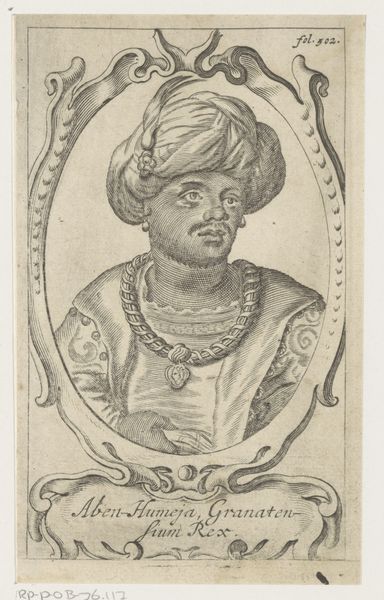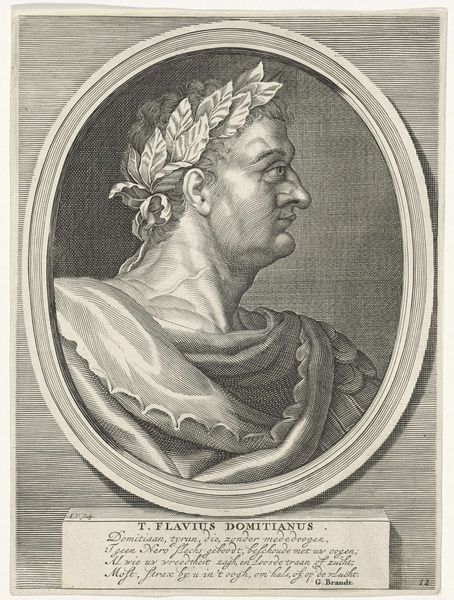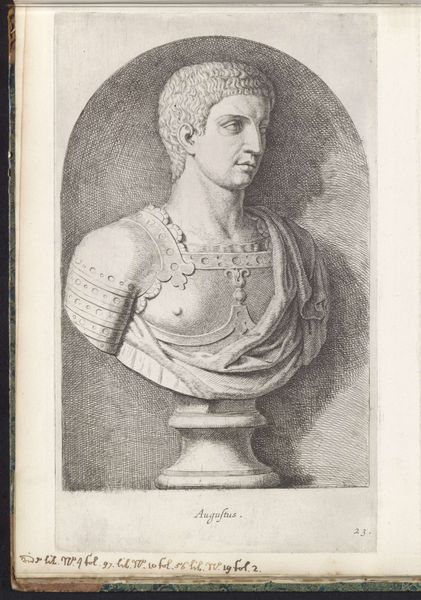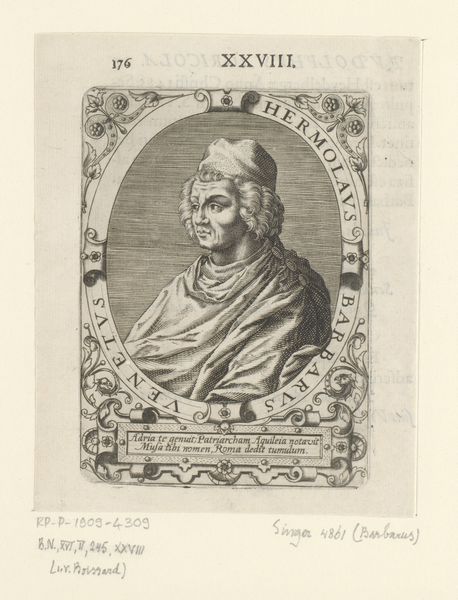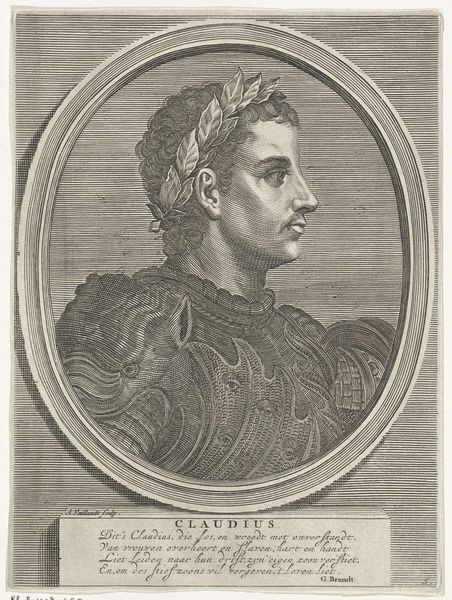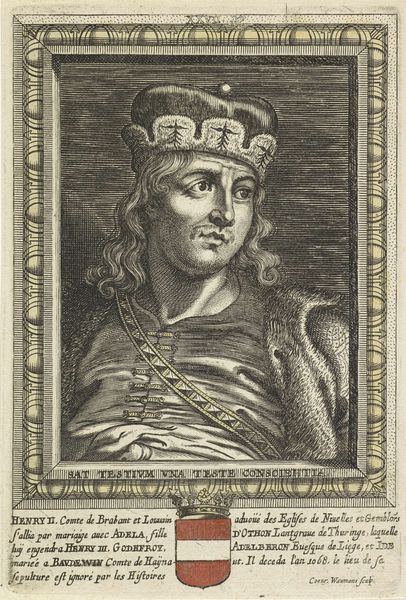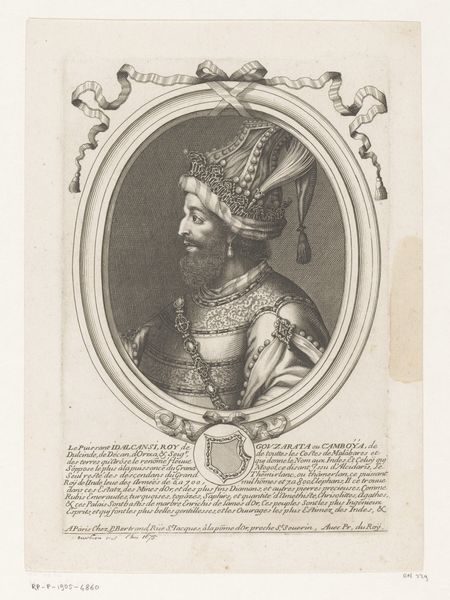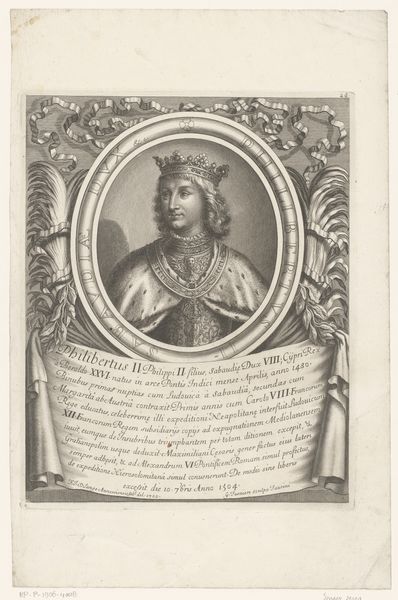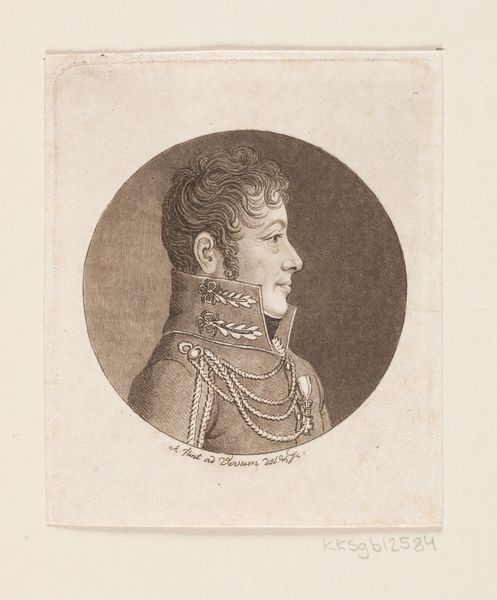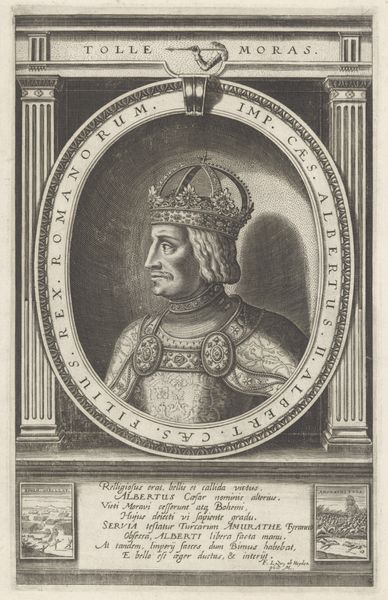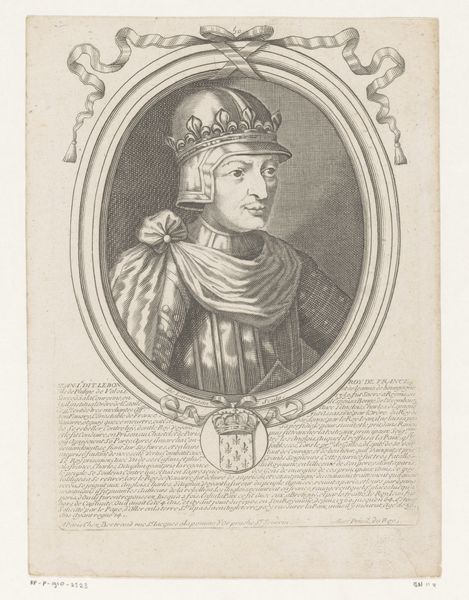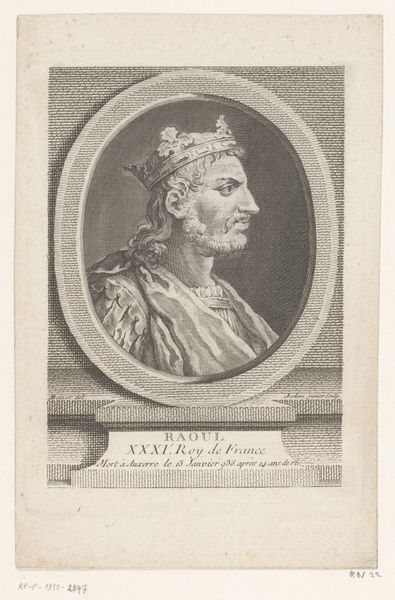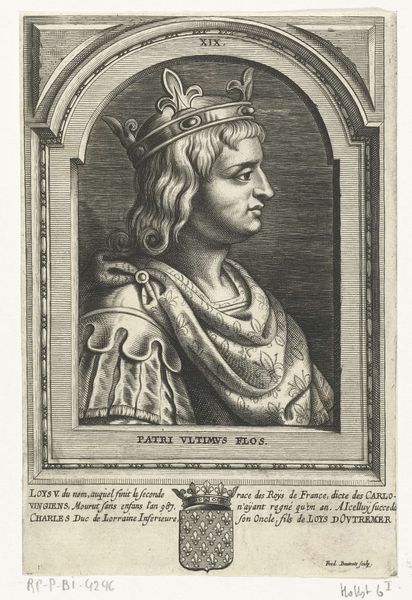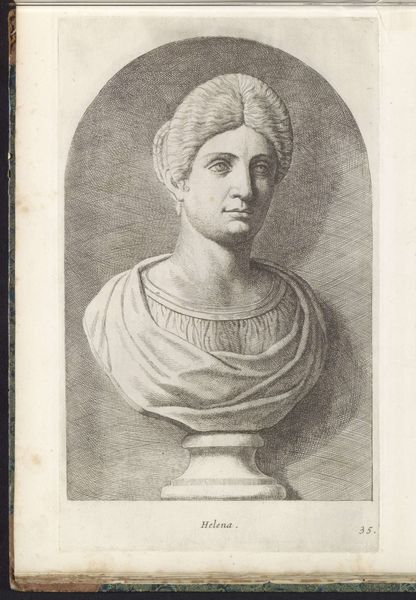
Portret van Jalaluddin Muhammad Akbar, keizer van het Mogolrijk 17th century
0:00
0:00
engraving
#
portrait
#
old engraving style
#
caricature
#
figuration
#
ancient-mediterranean
#
portrait drawing
#
islamic-art
#
history-painting
#
engraving
Dimensions: height 165 mm, width 121 mm
Copyright: Rijks Museum: Open Domain
Curator: Here at the Rijksmuseum, we have an engraving from the 17th century titled "Portret van Jalaluddin Muhammad Akbar, keizer van het Mogolrijk," an anonymous work depicting Emperor Akbar. Editor: My initial impression is one of detailed formality. The rigid frame juxtaposed with the flowing drape creates an interesting visual tension, a confined regal moment, if you will. Curator: Indeed. The formal elements are striking. Notice how the artist uses the graphic lines to delineate Akbar's figure against the neutral background, carefully controlling contrast. Consider the ornamental detail—the pearls, the floral motifs of the frame itself. Editor: I'm drawn to the materials—specifically, what it meant to produce engravings like this in the 17th century. Each line is deliberate, etched presumably into a copper plate by hand. The work required meticulous skill and time, signifying not just Akbar's status, but the engraver's, too. How was this process disseminated; what would an engraving like this mean to contemporary printmaking traditions in the West? Curator: From a semiotic perspective, the portrait acts as a signifier of power and authority. The pearls and fine fabrics represent his wealth and status, carefully constructed through symbolic visual language. We, the viewers, are meant to read these signs and acknowledge the Emperor's grandeur. Editor: And what about the labor involved in obtaining these signifiers? The pearl diving, the silk production – all part of a vast system of exploitation. Understanding those processes transforms how we perceive his opulence, doesn't it? Curator: Certainly, that reading adds a layer of critical depth. Perhaps the tension I mentioned comes from that unacknowledged production underpinning the luxurious surfaces represented here. Editor: This analysis of process changes my view on the piece. Curator: For me, contemplating the graphic language and structural precision, enhances my experience. Both elements give valuable depth.
Comments
No comments
Be the first to comment and join the conversation on the ultimate creative platform.
